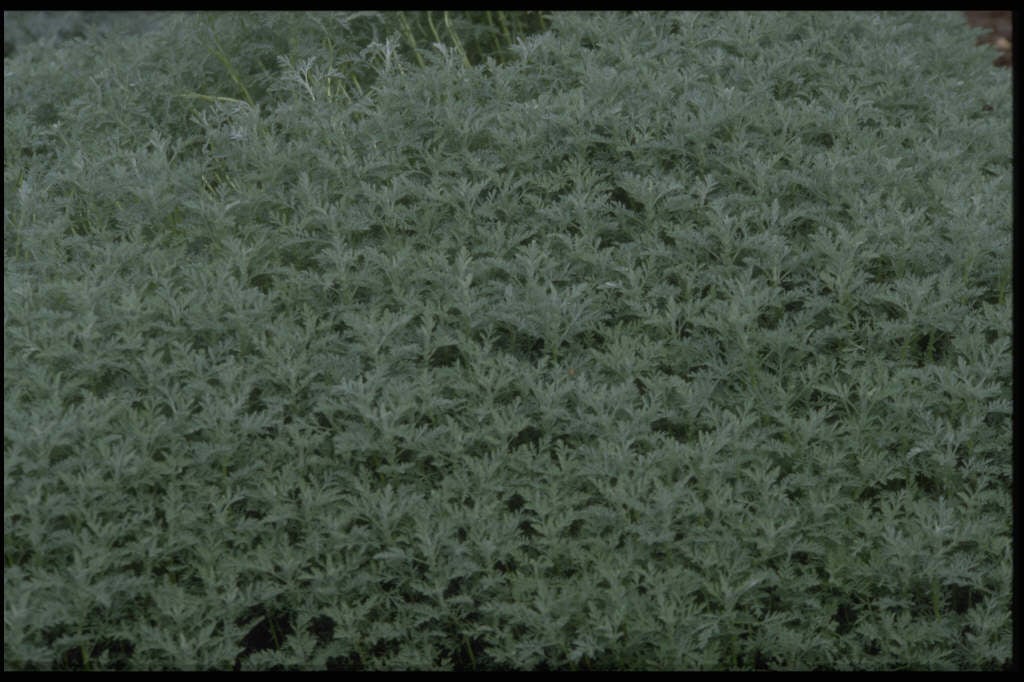Artemisia pontica
Roman wormwood
A vigorous herbaceous perennial making a spreading clump of upright stems to 75cm, clad in dissected, grey-green, highly aromatic leaves, with small greyish-yellow flowerheads in panicles at the tips of the stems
Size
Ultimate height
0.5–1 metresTime to ultimate height
2–5 yearsUltimate spread
1–1.5 metresGrowing conditions
Moisture
Well–drainedpH
Alkaline, NeutralColour & scent
| Stem | Flower | Foliage | Fruit | |
| Spring | Grey Silver | |||
|---|---|---|---|---|
| Summer | Grey Silver Yellow | Grey Silver | ||
| Autumn | Grey Silver | |||
| Winter |
Position
- Full sun
Aspect
South–facing or West–facing
Exposure
Exposed or Sheltered Hardiness
H7Botanical details
- Family
- Asteraceae
- Native to GB / Ireland
- No
- Foliage
- Deciduous
- Habit
- Suckering
- Genus
Artemisia can be shrubs, perennials or annuals, evergreen or deciduous, with usually grey, aromatic, often divided foliage and rather insignificant flower-heads
- Name status
Correct
- Plant range
- CE Europe
How to grow
Cultivation
Grow in fertile well-drained soil in sun. Can die back in heavy, poorly-drained soil
Propagation
Propagate by seed in containers in a cold frame in autumn or spring; divide in spring or in autumn; take stem-tips as greenwood cuttings in late summer
Suggested planting locations and garden types
- Coastal
- Cottage and informal garden
- City and courtyard gardens
- Gravel garden
- Flower borders and beds
- Ground cover
Pruning
Can be cut to the base in autumn
Pests
Generally pest-free
Diseases
May be susceptible to honey fungus
Love gardening
Sign up to receive regular gardening tips, inspiration, offers and more
View our Privacy Policy
Get involved
The Royal Horticultural Society is the UK’s leading gardening charity. We aim to enrich everyone’s life through plants, and make the UK a greener and more beautiful place.

